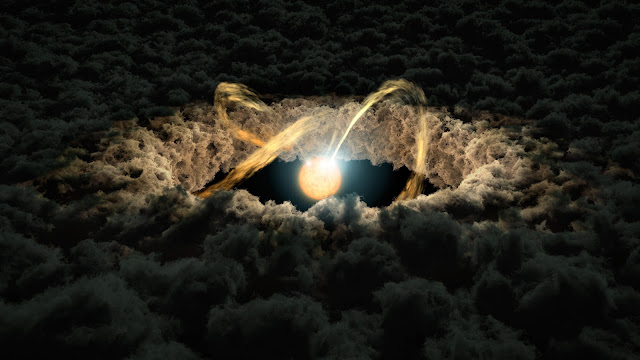This illustration shows a star surrounded by a protoplanetary disk. Material from the thick disk flows along the star's magnetic field lines and is deposited onto the star' surface. When material hits the star, it lights up brightly.
The star's irregular illumination allows astronomers to measure the gap between the disk and the star by using a technique called "photo-reverberation" or "light echoes." First, astronomers look at how much time it takes for light from the star to arrive at Earth. Then, they compare that with the time it takes for light from the star to bounce off the inner edge of the disk and then arrive at Earth. That time difference is used to measure distance, as the speed of light is constant.
Image Credit: NASA/JPL-Caltech
Explanation from: http://photojournal.jpl.nasa.gov/catalog/PIA20645




No comments:
Add your comment